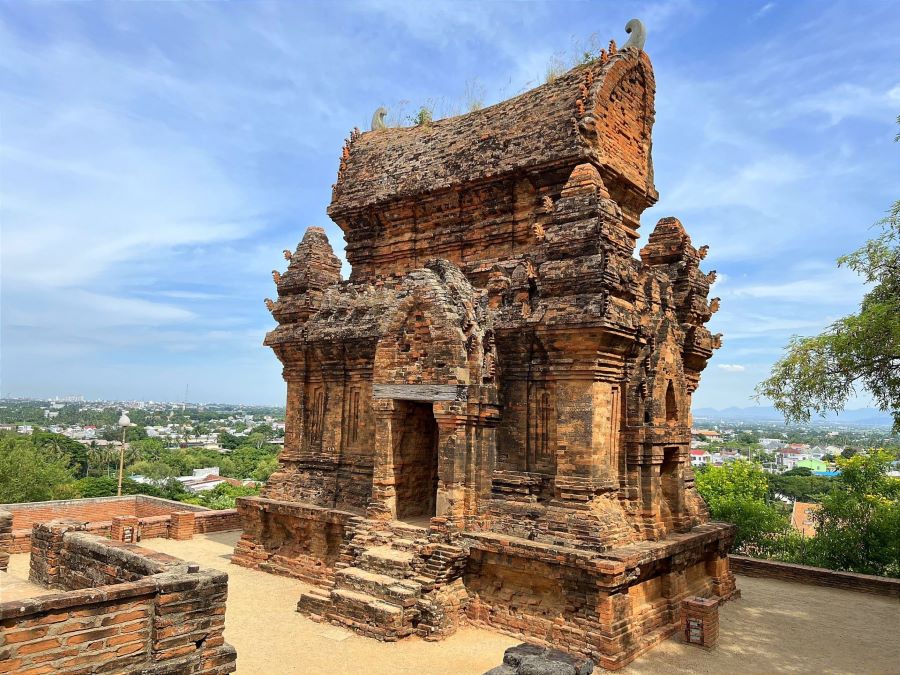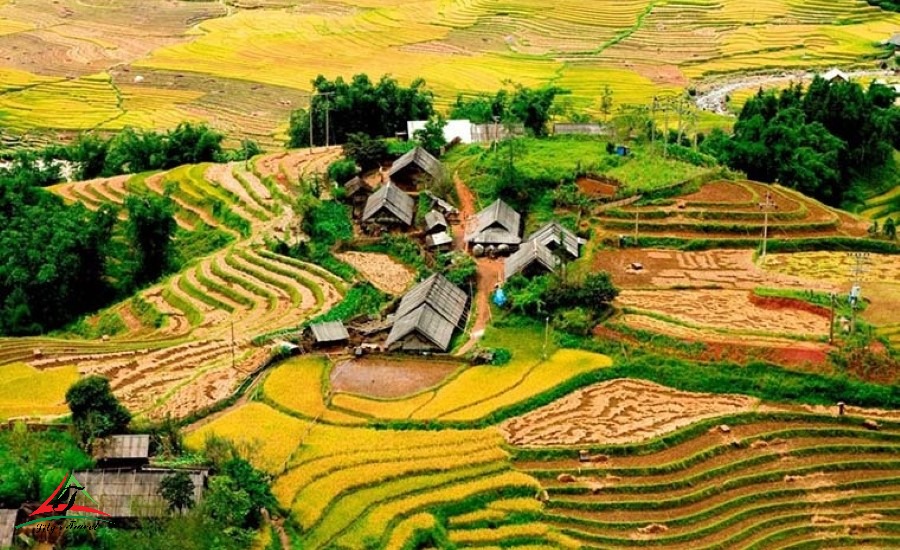Vietnamese Tet – Lunar New Year 2026
During Vietnamese TET, the country bursts with color and tradition, from flower markets to lion dances, giving travelers a unique glimpse into Vietnam’s festive spirit and cultural heritage.
The aim of these activities are simple as entertaining the community or expressing respect to country’s builders and heroes as well as commemorating remarkable events. The festivals and events listed below may take place on a nation scale or belong to specific regions. There are two main types of activities conducted in Vietnam’s festivals: ceremonial rites and entertaining activities. Lunar New Year or Vietnamese Tet holiday is the most important festival of Vietnamese people.
- 2026 the 1st date of TET: 17 February 2026
- 2027 the 1st date of TET: 6 February 2027

Vietnamese Tet – Lunar New Year is a warm time for the Vietnamese to gather with their families and welcome a fresh year coming
Traditionally, the purpose of Tet holiday is that Vietnamese would like to thank Gods for the arrival of spring with a variety of blooming trees and flowers after a cold and harsh winter. Also, this is the privileged occasion for family’s members to reunite, celebrating a new year which has come together, and saying farewell to the previous one. All the best things are prepared and consumed during this holiday as people want to ensure that they will have a new year full of prosperity. Only one week for Vietnam tours can tourists see the full similarities and differences of Tet customs form Ha Noi to Sai Gon.
Kitchen Gods
Tet Holiday gets its beginning marked with the first day in the Lunar Year; however, its preparation starts long before that. One week before the holiday, in the 23rd day of the last Lunar month, is East Day – a ritual worshiping Kitchen Gods (Tao Cong). It is believed that each year on this day, these Gods (two males, one female) go to heaven to tell Jade Emperor (Ngoc Hoang) about all activities of households on earth. On the New Year’s Eve, they return to earth to continue their duties as taking care of families. Each household also buy a carp as this is the transport for the Gods on their trip to heaven. After the ritual, they set the carp free.

An offering meal for Kitchen Gods
Chung cake (Bánh chưng)
Kitchen Gods are believed as the first gods leaving earth to report, followed by others on the next day. Within the absence of all of the gods, household members start cleaning their houses and decorating them beautifully with a plenty of accessories – a process that must be done before the New Year’s Day as the appearance of cleaning equipment after that equals sweeping all the good lucks away.

Making Chung cake is a traditional activity in many regions of Vietnam on Tet holiday
In addition, people buy and/or prepare items exclusive in Tet Holiday (for example: Chung cake, Day cake, pork bologna, pickled onion, candied fruits and seeds) – mainly foods that can be stored for a long time as all services are closed in the event, for about two weeks. Also, they buy new clothes, and give gift to their homies, relatives as well as friends. One thing to remember is that everybody needs to pay all of the debt as remaining debts from one year to another is considered bringing bad lucks.

Vietnamese traditional Banh Chung
New Year’s Eve (Giao thừa)
The penultimate New Year’s Eve – Tat Nien, the meal finishing the entire year – should be well served, in which everyone involved remembers all the happy moments and talks about the good things only. On the New Year’s Eve (Giao Thua), Vietnamese people have a spectacular celebration which involves the whole nation – some may gather around TV and watch the Tao Quan show, some may go out for fireworks observation. When the bell of the twelfth hour rings, everybody gathers, at exciting parties or at the comfort of their homes, saying Happy New Year to one another in warm hugs, forgetting all problems as well as hoping for a better start.

Vietnam New Year Eve
Year end party (Tất niên)
On the New Year’s Day, the first ones who come to visit households – called first-foot – are very important and hence need to be well chosen, as they are believed to hold in their hands the entire luck of the family in New Year (Tan Nien). After that, till the third day or even the fourth day of Tet, individuals meet relatives, friends and colleagues, wishing them all kinds of good things like happiness, health and success. They give children lucky money covered in pretty little red envelopes also because of that reason, as red represents good lucks. Also, they visit pagodas to pray for a good start in the coming year. It is high time for Vietnam family tours when all the members of the family go to the pagodas together and pray for a happy year.

A master giving calligraphy letters on Lunar New Year
There is a saying in Vietnam, “Father’s Tet is on the First Day of New Year, Mother’s Tet is on the Second, and Teacher’s is on the Third”. The best illustration of the quotation is that, on the first day, Vietnamese visit their parents on the husband’s side on; on the second day, they turn to parents on the wife’s side; and lastly, they spend their third day of Tet visiting their teachers. All in all, Tet is all about back to origins, wishing for the best, and joining in colorful parties. Paradise travel provides many unique Vietnam tours for visitors who want to enjoy Lunar New Year.
Time: 1st lunar month
Purpose: reunite family; celebrate New Year with the best
Vietnamese Important Activities during TET
Kitchen Gods Worshiping Ritual
One of the most important customs leading up to Tết is the ritual of bidding farewell to the Kitchen Gods (Táo Quân). According to Vietnamese belief, these three household deities return to Heaven on the 23rd day of the last lunar month to report on the family’s activities over the past year. Families prepare offerings such as fruits, sweets, sticky rice, and especially carp fish, which serve as the Gods’ means of transportation to Heaven. After the ritual, the carp are traditionally released into rivers or lakes, symbolizing good deeds and hopes for blessings in the coming year.
Cleaning and Preparation
In the days before Tết, Vietnamese families thoroughly clean and decorate their homes. This practice is more than simple housekeeping; it carries deep symbolic meaning. Cleaning the house represents sweeping away bad luck and misfortune from the old year, making room for prosperity and happiness in the new one. Families also decorate their homes with kumquat trees, peach blossoms in the North, and yellow apricot blossoms in the South. These plants symbolize fertility, growth, and success. Markets overflow with festive items, and families stock up on traditional foods to prepare for guests and ancestral offerings.
New Year’s Eve (Giao Thừa)
On the night before the Lunar New Year, families gather for the sacred moment of transition between the old year and the new. This is one of the most anticipated events of Tết. People prepare trays of offerings to their ancestors, light incense, and pray for health, peace, and prosperity. Many households also perform rituals to invite new protective deities who will watch over the family during the coming year. Public celebrations include fireworks displays in major cities, and the air is filled with excitement, music, and the sounds of drums welcoming the New Year.
New Year’s Day (Mùng Một Tết)
The first day of the Lunar New Year is considered the most important. It is believed that how this day is spent sets the tone for the entire year. Families pay respects to their ancestors through offerings and prayers, and younger members greet their elders with best wishes for health and longevity. In return, children often receive lì xì – red envelopes containing lucky money – as a symbol of good fortune. People are mindful of their words and actions on this day, avoiding quarrels or negativity. Visits to relatives, neighbors, and friends begin, with the first visitor (người xông đất) carrying special significance, as their zodiac sign and energy are believed to influence the household’s luck for the year.
Start planning your tailor-made Vietnam tour by contacting one of our specialists…







